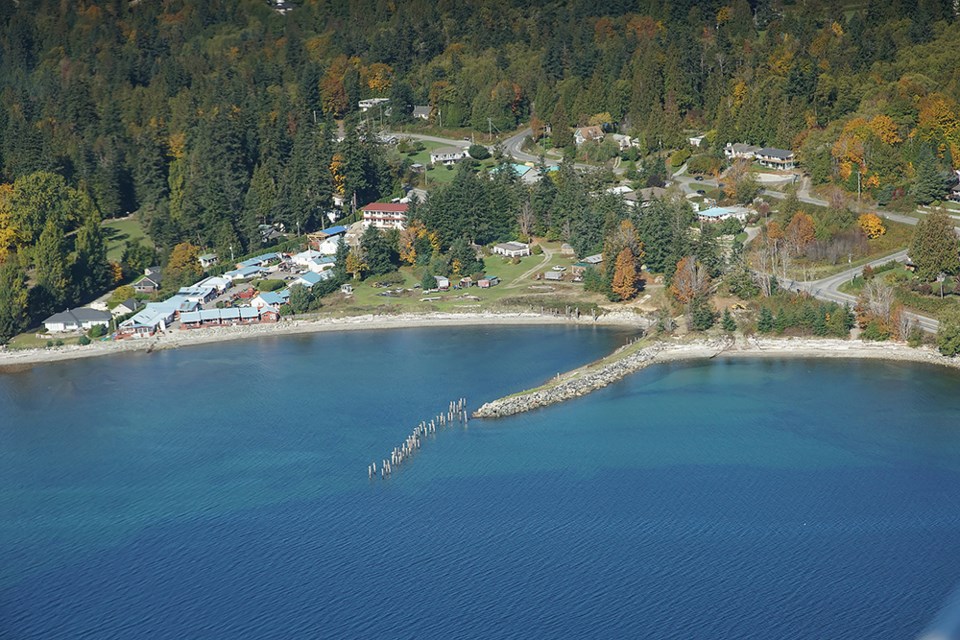qathet Regional District's board has received a water system extension study that looks into servicing regional district properties southeast of the city.
At the July 29 regional board meeting, directors approved receipt of the study, conducted by Associated Engineering, which examines tying into City of Powell River water, from Rifle Range Road, at the city boundary, to Centennial Drive, along the Highway 101 corridor. The Associated Engineering report stated there were 246 properties within the pilot project area. Estimated cost of hooking into the city water supply is more than $8.6 million, according to the report. Carrying the city system to Saltery Bay, which was also looked at, would cost more than $74 million.
At the July 15 committee of the whole meeting, Electoral Area B director Mark Gisborne had six questions regarding the study and after posing them, said the report before the directors contained multiple motions for the board to consider as well as notes relating to how various options could affect the workflow of the regional district and the strain it would put on staff.
He said since the directors were discussing a multimillion dollar project affecting the lives of residents of Electoral Area B, he said out of respect for the public and taxpayers, directors should go over the proposal in detail and make the best decision for the community.
Committee of the whole chair and Electoral Area D director Sandy McCormick said the motion being considered by directors was to receive the document. She asked that Gisborne keep his comments to the motion.
Gisborne said his understanding was that in receiving the document, contents of the document are subject to discussion and debate.
McCormick said the motion was to receive the document.
Gisborne asked if he was allowed to discuss the contents of the document. Chief administrative officer Al Radke said if the comments were not relevant to the receiving the document, then he did not believe they would be in order.
Gisborne said he had a lot of notes and this was a proposal for potentially a $74 million project.
“It is worthwhile discussing the contents out of respect for the taxpayers,” said Gisborne.
Radke said the report was only being received at this juncture and there has been no direction to carry on with any project of any given size.
McCormick said that might happen down the road.
Gisborne said he would hold those comments for a time when the regional district might do anything down the road.
Fall questions costs
Electoral Area E director Andrew Fall said the study was to look at quality and quantity and demands, and that was laid out really well in the report. He said if projections were made to 2051, and include current demands of the city, as well as the pilot area and all of the properties down to Saltery Bay, the projected water demand is 411 litres per second, and supply capacity with the current treatment plant is 448 litres per second. He said the conclusion is that supply is not a huge limitation, but it does raise the issue of what if climate change reduces that.
Fall said the big factor that stands out for him is the cost. He said for the area from city limits to Centennial Drive, coming in at more than $8.6 million, a rough translation is $35,000 per property if it was all paid upfront. He said a 30-year amortization translates to higher interest rates, with annual payments being in the $500,000 per year range. He asked if the financial effect on property owners would be about $2,000 per year over that 30 years.
Manager of technical services Nancy Schmeister said the figure is actually about $3,500 per year per property owner, with full life-cycle costing included.
City director George Doubt said the report is about a feasibility study regarding whether it’s possible to do the waterline extension and an estimate of what the cost would be. He said he thought that had been well done in the study and it gives the regional district a start if it ever comes to the point where the regional district is talking about doing an extension.
Directors voted to receive the report.
Area B director presents subsequent motion
Gisborne had a subsequent motion that the committee recommend the regional board direct staff to search for funding options to complete a study to determine the quantity and quality of groundwater sources and the carrying capacity for future growth and development in the planning area. He said while the community should be concerned about urban sprawl, the greatest contributor of carbon emissions in North America, his past resistance to any waterline project is because he continues to insist on correctly following provincial legislation, as well as the regional district’s bylaws and policies.
Gisborne said the Electoral Area B official community plan, under the heading water supply, has a policy that states the regional board will pursue funding options to complete a study to determine the quantity and quality of groundwater sources and the carrying capacity for future growth and development in the planning area. He said the next policy states the regional district will investigate the options and feasibility of developing a regional water supply system, based on conclusions and recommendations of the southern region water source study completed in 2009, and the noted study on the quantity and quality of groundwater sources.
He said in order to be consistent with the official community plan regarding the provision of potable water, and in order to be compliant with the Local Government Act, the process needs to be based on the conclusions and recommendations of the 2009 study. He said while the information in the 2021 study can be helpful, it is unable to act as a guiding document for the provision of water in Electoral areas B or C.
The motion was defeated.



